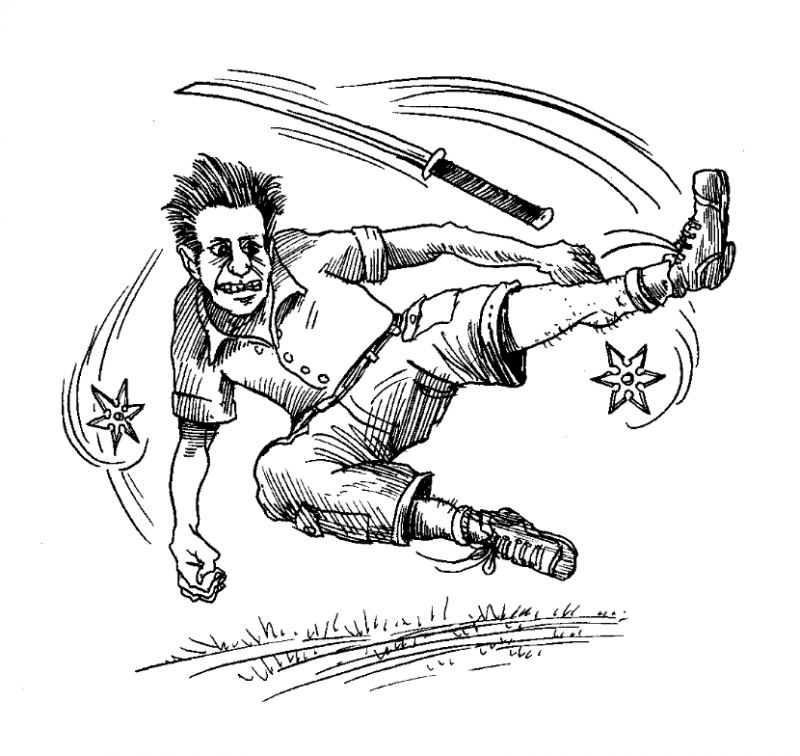There is no place on Earth where a person can say with absolute certainty that they are not being stalked by ninjas. Common sense suggests this is unlikely, but pure logic dictates that you cannot prove a negative, and the art of the ninja is to go unperceived.
I have been around the world to look for them, to shadow them in reverse, and whenever I find a possible candidate, he or she tends to deny it. “No, no, no,” said Mats Hjelm, a web designer from Stockholm, during a short break from his ninjutsu class in Tokyo.
“I don’t like to call it by that name, although I know that some other people do. And I definitely don’t call myself a ninja.” This was, of course, exactly what a true ninja would say.
I had followed Hjelm and several other foreigners to the Budokan on a Friday night—not the famous music venue where Cheap Trick recorded that killer live album in 1978, but the concrete exhibition hall for Japanese warrior arts at the end of the Chiyoda metro line. These Western pilgrims were not hard to spot on the subway, dressed mostly in black and carrying arcane wooden practice weapons in suspiciously shaped cases, slung as if they were real.
Ninjutsu, they told me, was just one part of their training in Bujinkan Budo Taijutsu, a modern fighting system amalgamated from nine traditional schools of martial arts. Only three of those nine have been linked to the teaching of ninja-specific techniques.
“I am not so interested in ninjas,” said George Ohashi, a Bujinkan instructor and administrator, and one of the relatively few Japanese among a global membership of more than a hundred thousand.
“We are studying budo [which roughly translates as “the way of the warrior”] here. Some people have a different image in their heads, and they are not satisfied with what they see in our dojo. We can’t help that, and we don’t mind it.”
While we spoke, an older and more senior instructor—or shihan—named Koichi Oguri was supervising fifty or so students as they practiced a fluid, complex sequence of blocks and strikes that he had just demonstrated. The vast auditorium was otherwise empty, and silent except for the low rumble of bodies falling and rolling.
“Yes, it’s quiet,” agreed Ohashi. “We have no kiai.” Kiai is the battle cry often heard in karate and other martial forms that have become competitive sports. The Bujinkan has not. There are no spectators, and no rules as such. Where...
You have reached your article limit
Sign up for a digital subscription and continue reading all new issues, plus our entire archives, for just $1.50/month.
Already a subscriber? Sign in





